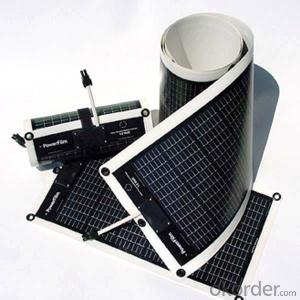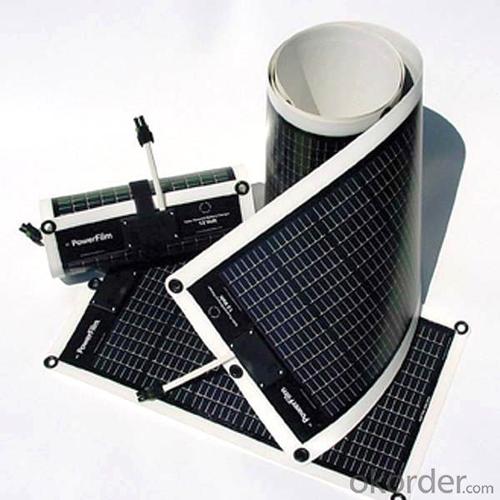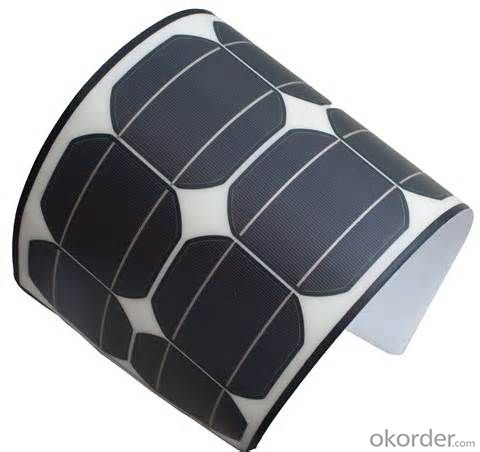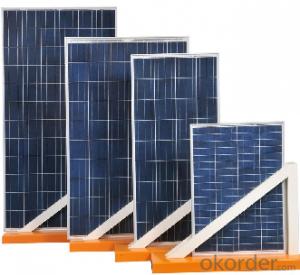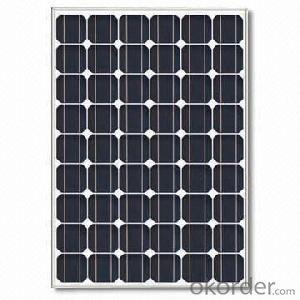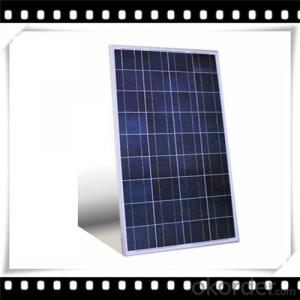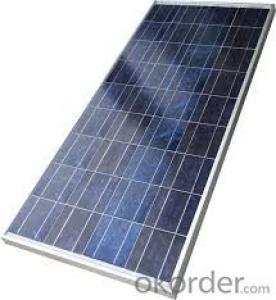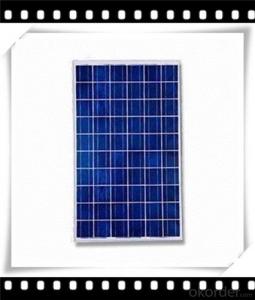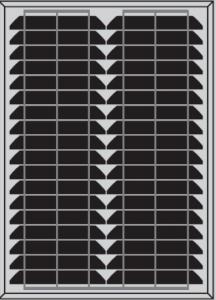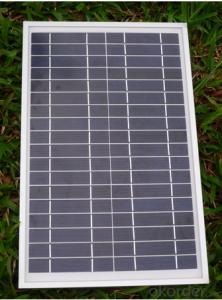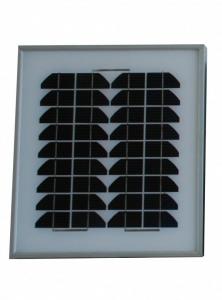20W Mini Flexible Solar Panel from CNBM Solar
- Loading Port:
- Shanghai
- Payment Terms:
- TT OR LC
- Min Order Qty:
- 1000 watt
- Supply Capability:
- 10000 watt/month
OKorder Service Pledge
OKorder Financial Service
You Might Also Like
Specification
Product Description
20w mini flexible solar panel
Flexible solar panel are designed to provide a powerful charging solution for batteries and conform to almost any surface. Unlike other 'flexible' products, these use high-efficiency monocrystalline cells that produce more power per square foot than any other flexible panel on the market.
An impermeable lamination coats the entire module, allowing it to contour and flex against curved areas, eliminating any need for custom mounts.
The panel can be affixed by adhesive or screw mounting options and grommets are an added bonus for ease-of-installation. The thin, lightweight module can also be sewn into canvas, making it a truly versatile solar m odule.
The Solar Flex panels are aerodynamic and DURABLE - a virtually unbreakable solar battery charger for RVs, boats and long-haul trucks.

Module size (mm): | 285*460 |
Cell Type | 125x24.5 |
Weight(kg) | 2 |
Power tolerance: | +/-3% |
Nominal peak power(WP): | 20 |
Nominal voltage(V): | 17.6 |
Nominal current (A): | 1.14 |
NOCT: | 45+/-2°C |
Voltage temperature coefficient: | -0.33%/°C |
Current temperature coefficient: | +0.05%/°C |
Power temperature coefficient: | -0.23%/°C |
Open circuit voltage (Voc): | 20.8 |
Short cirsuit current(Isc): | 1.23 |
Conversion efficiency: | 20.41% |
Operating temperature: | -40 to+85°C |
Max system voltage: | 1000V DC |
- Q: My hubby and I are waiting to move in to our camper but have to figure out how many solar panels, batteries, etc. to get. I can't find the info per appliance for Watts and amps, but does anyone have a good, general idea of how many Watts it'd take to run the whole shabang? It's a 999, 25-foot Sportsmen tag-a-long, if that helps..It's got the following, and we'd like to run the propane things off of electric:*Refrigerator/freezer*Microwave*Oven/stove*AC/Heat*Will have a tv, phone chargers, laptop charger, but those will be unplugged when not in useThanks so much! It's such a headache.. You get SO MUCH different info from different places.. OI..
- whenever i do my gf, i use up to 900 watts of power
- Q: I have a shed that has wiring run for light bulb and a couple outlets. It is in a dark corner of my yard and at night is kinda creepy to go in with even a flashlight. I am weighing the option/expense of running electricity from the house on an overhead line versus putting up a 45 watt solar panel on the metal roof with inverter, battery etc. Sunlight is good to excellent at the location. Question is - will this be sufficient for the occasional use of light and an outlet? What can I expect? Pros and cons appreciated
- For okorder /... Electric power. Rather than an overhead cable you can bury a cable or PVC conduit and power the shed with 20AC. You can easily supply 5 to 30A of 20V AC that supply all of your power needs without the issues and limitations of the Solar system. If your shed is within 200 ft of your home you should be able to power the shed for less than $400 if you do the work.
- Q: Can solar panels be used for powering a telecommunications tower?
- Yes, solar panels can be used to power a telecommunications tower. Solar energy is a renewable and sustainable source of power that can efficiently generate electricity to meet the energy demands of a telecommunications tower. By harnessing the sun's energy through solar panels, the tower can operate off-grid and reduce its reliance on traditional power sources, making it more environmentally friendly and cost-effective in the long run.
- Q: I need to build a battery array to use with my solar panels I just bought. I want to be able to store enough energy to be draw from it at night, possibly around the clock. Is there a down side to using the deep cycle battery I bought from autozone and 6 or 7 more just like it, or do I need to get some other battery?
- There are batteries particularly made for solar, such as the Trojan T05-RE . I think the RE stands for renewable energy. A deep cycle battery should work all right, although not quite as well. What you want to do is try out your setup first, with just one battery, and the panels provided. If this is one of those 45 watt kits, you may be surprised at how little energy you actually get from the panels. Increasing the number of batteries won't help, either - that's like getting a larger water tank, when you only have a trickle to fill it. If your goal is really to save money, the most cost-effective solar is the grid-tied type, with no batteries at all. That's what we have, and I've never regretted it.
- Q: Is it really necessary to make solar panels that expensive?
- I think it will cost about %0 Million US for a 50 Mega Watt Factory
- Q: Can solar panels be used in areas with high levels of seismic vibrations?
- Yes, solar panels can be used in areas with high levels of seismic vibrations. However, it is crucial to ensure that the solar panels and their mounting structures are designed and installed to withstand these vibrations. Reinforced and flexible mounting systems, as well as robust frame connections, can be employed to enhance their durability and resistance to seismic activity. Additionally, regular inspections and maintenance are necessary to ensure the continued efficiency and safety of the solar panels in such areas.
- Q: Can solar panels be installed on airports?
- Yes, solar panels can be installed on airports. In fact, many airports around the world have already embraced solar energy to meet their power needs and reduce their carbon footprint. These panels are typically installed on rooftops, parking structures, or vacant land within the airport premises. The use of solar panels in airports not only helps generate clean and renewable energy but also contributes to cost savings and long-term sustainability.
- Q: How are solar panels installed?
- Solar panels are typically installed on rooftops or in open areas with maximum exposure to sunlight. The process involves mounting the panels onto a structure, such as a roof or frame, using brackets and screws. The panels are then connected to an inverter, which converts the direct current (DC) generated by the panels into usable alternating current (AC) electricity. Wiring and electrical connections are made to connect the solar system to the home or the grid.
- Q: Can solar panels be installed on museums or cultural centers?
- Yes, solar panels can be installed on museums or cultural centers. In fact, solar panels are a popular choice for these buildings as they not only provide a sustainable source of energy but also promote environmental consciousness and serve as an educational tool for visitors. Additionally, solar panels can help museums and cultural centers reduce their energy costs and contribute to a greener future.
- Q: Can solar panels be installed on warehouses or industrial facilities?
- Yes, solar panels can be installed on warehouses or industrial facilities. In fact, these types of buildings often have large rooftops or open spaces that are ideal for solar panel installations. This allows them to generate clean and renewable energy, reduce their reliance on traditional power sources, and potentially save money on energy costs.
Send your message to us
20W Mini Flexible Solar Panel from CNBM Solar
- Loading Port:
- Shanghai
- Payment Terms:
- TT OR LC
- Min Order Qty:
- 1000 watt
- Supply Capability:
- 10000 watt/month
OKorder Service Pledge
OKorder Financial Service
Similar products
Hot products
Hot Searches
Related keywords
